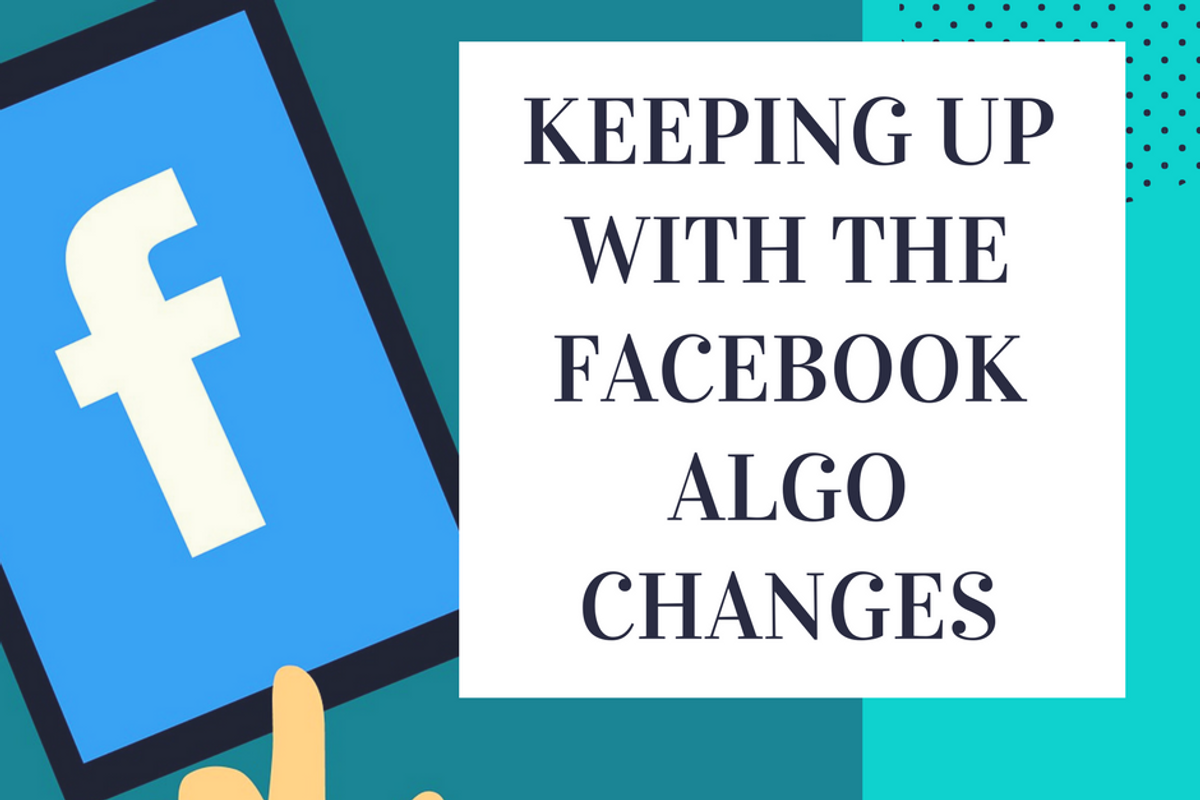
New Facebook product updates and algorithm changes pop up just about every week, and we don't expect busy publishers and new media companies to scour the internet looking for every last one. Which is why we do our best to keep you up to date with every important platform initiative.
To avoid compromising reach and engagement, it's important to understand Facebook's ongoing updates and how you can incorporate them into your social strategy. 2018 has been full of sweeping algorithm changes and meaningful updates that are getting tweaked and expanded almost every week. Here's where we'll keep a timeline all year long of each platform and algorithm change, and what it means for your Page. Keep checking back through December!
June 13, 2018: New Requirements for Custom Audiences
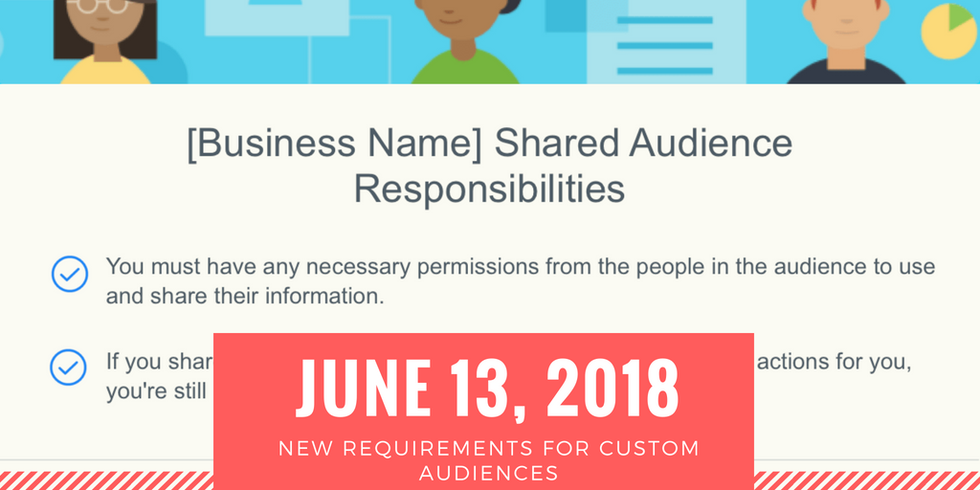
What Happened: Effective July 2, 2018, Facebook will require advertisers to specify where they received information about their audience before it can be uploaded to the Ads Manager as a Custom Audience. Previously, businesses were able to upload a customer data set (e.g., a CSV of their email newsletter list) to create a Custom Audience for ad targeting. Now advertisers will need to indicate if the data was taken directly from customers, customers and partners (mainly referring to third-party ad agencies), or directly from partners:
Image from Facebook.
In turn, when users see an ad, they'll now be able to click the drop-down menu labeled "Why am I seeing this?" to learn more about the source of the ad. Users will be able to see if the ad made it to their News Feed via a publisher directly or through a partner. They can also see if the advertiser was able to target them using their email address or phone number. This could prompt users to choose to stop seeing certain ads by updating their Ad Preferences.
Image from Facebook.
Facebook also said it would be reminding advertisers of the new privacy rules more often. Every member of a Business Manager must now accept privacy terms. Previously, this was only required of Facebook administrators.
What It Means: This crackdown on Custom Audiences is another Facebook update to help prevent the social platform from tripping into another data scandal. While the platform has always required consent for Custom Audiences, it was not immediately clear to most users of the Ads Manager. TechCrunch reports that it was this looser approach to API rules that led to the Cambridge Analytica scandal. While these changes shouldn't impact publishers who already use valid customer data sets, do keep an eye out for any dip in ad impressions due to the increased control users have been given over their experience on the platform.
June 1, 2018: Removal of Trending Topics
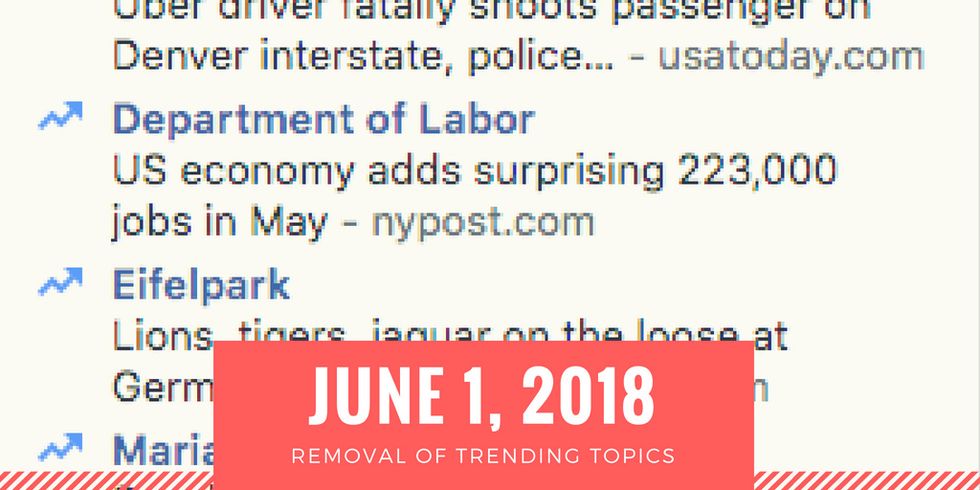
What Happened: Facebook kicked off June 2018 by announcing the removal of the Trending feature from their platform, which appeared in the right rail of the News Feed. The platform said that the feature was only live in five countries and responsible for less than 1.5% of clicks to news publishers. Facebook will officially remove the widget next week, as well as third-party integrations using the Trends API.
In its place, the platform plans to focus on different ways to deliver news to users. Here are the upcoming changes Facebook listed in their official announcement:
Breaking News Label: Currently in test mode for 80 publishers across North America, South America, Europe, India, and Australia, this feature allows publishers to put a "breaking news" indicator on their posts in the News Feed. Facebook is also testing breaking news notifications.
Today In: The platform is also testing a dedicated section called Today In that connects people to the latest breaking and important news from local publishers in their city, as well as updates from local officials and organizations.
News Video in Watch: Facebook will soon have a dedicated section on Facebook Watch in the United States where people can view live coverage, daily news briefings, and weekly deep dives that are exclusive to Watch.
What It Means: Trending topics became automated in 2016 after Facebook was accused of being biased against conservative and right-leaning stories within the feature. Even after the widget went humanless, it would still go on to display fake news and even a 9/11 hoax that drew its own headlines. Given its turbulent history, Facebook's announcement to remove Trending comes as no surprise. The new features listed in the June 1, 2018 announcement are just another extension of Facebook's push to rid their platform of false, misleading, and damaging news coverage.
April 23, 2018: Update to API for Political Ads
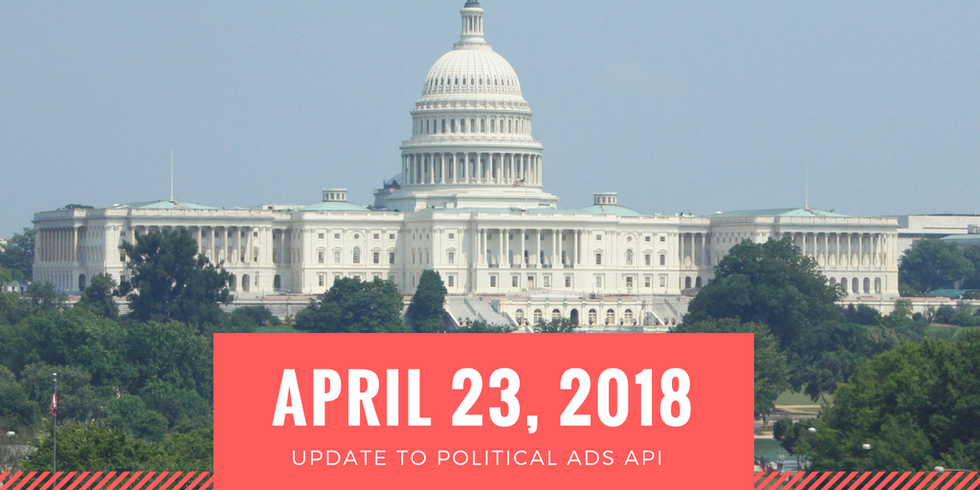
What Happened: Facebook will soon require Pages running political ads to confirm their identities and provide information about their ads' funding sources. Once a publisher is authorized by the platform, they must update their API and mark each ad as "political" during the creation process. The new authorization guidelines are currently only active in the U.S., and will continue to roll out over time.
What It Means: It's no surprise that — after the fake news fallout that haunted the 2016 U.S. presidential election — Facebook must take strict action to regulate political ads. The platform's focus is to create transparency between ad buyers and consumers. Expect more changes like this to be announced as we get closer to the next U.S. presidential election.
April 9, 2018: Facebook Restricts Access to Instant Articles for Publishers
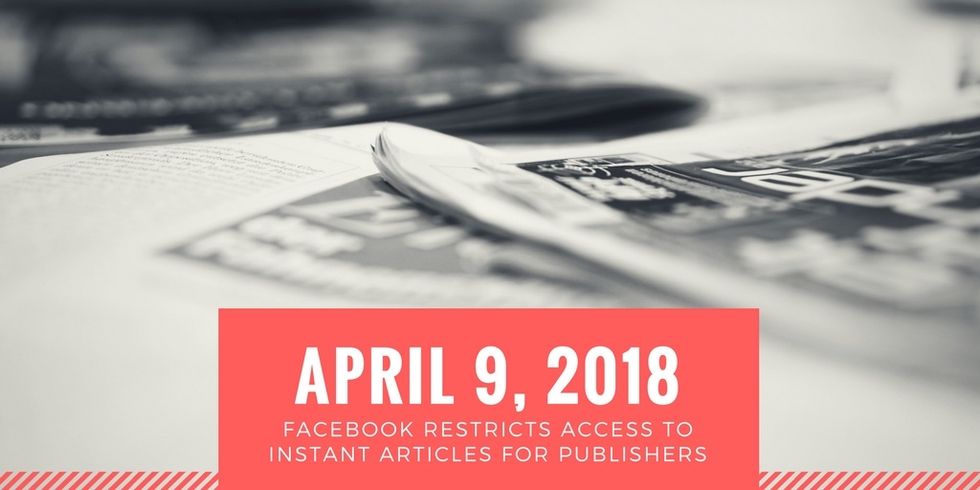
What Happened: Many Pages that publish content using Facebook Instant Articles were surprised to learn they lost access to the feature starting April 9, 2018. Despite many users thinking it was a bug, Facebook stated in a report that it was intentional. There are three reasons publishers are losing access to Instant Articles:
- Inactive Publisher: In order to publish Instant Articles, Pages are required to publish at least one article every 90 days. Publishers who have become inactive should reapply for access to Instant Articles with at least 10 new Instant Articles to submit for review.
- Low Readership: Pages with low readership may lose their access to Instant Articles. The best solution in this scenario is to carefully read over the content policies for Instant Articles, make any necessary changes, and then reapply for access.
- Non-Compliance with Facebook's Monetization Standards: Even if you don't plan on monetizing your Page, publishers' content still has to meet Facebook's monetization standards. Carefully review the standards before reapplying for access to Instant Articles.
What It Means: Count this update as more housekeeping for Facebook in the wake of its data scandal. Now that Facebook is under intense scrutiny — especially from Congress — for the content it hosts, the platform is ensuring that every Page is adhering to their detailed standards. This, in theory, will help prevent misleading or vague Pages from gaining high reach in the News Feed. Also, Facebook Instant Articles is one of the few ways to make revenue on the platform. Restricting access to only Pages that genuinely follow its rules will help eliminate any loopholes for fake or harmful accounts to make money on the platform.
April 4, 2018: Facebook Restricts Data Access
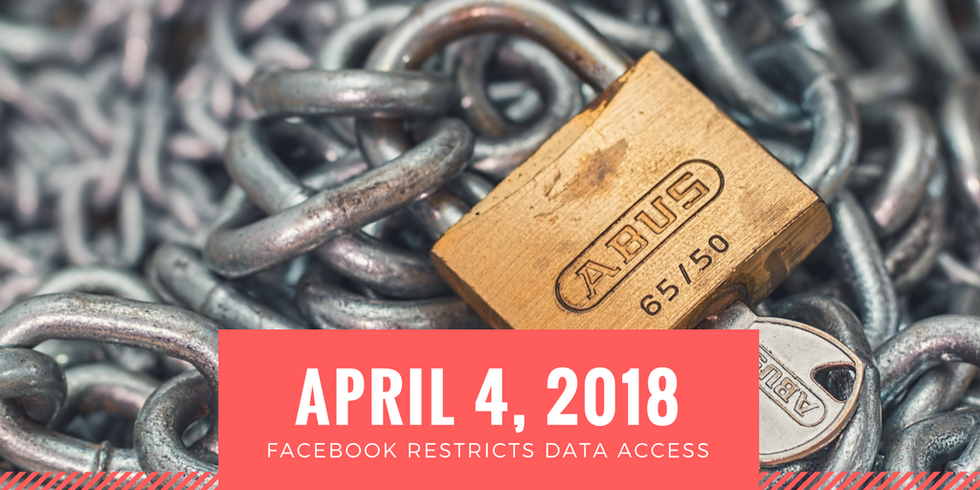
What Happened: As what appears to be another direct result of the Cambridge Analytica user information scandal, Facebook announced plans to restrict data access on their platform. In what Facebook promises will be "many changes" in the coming months, the platform started by cutting off API access to Events, Groups, Pages, and Instagram for new developers. If a new developer wants to gain access to these APIs, they must first submit a request for a formal app review.
Part of these API changes is a new access token requirement for app developers. The new rules require user access tokens to be renewed every 90 days. For example, if you use your Facebook account to make dinner reservations on OpenTable, that requires a Facebook token. These tokens can only be renewed with the consent of the user using the app.
Facebook also announced that they will make changes to the following features:
- Search and Account Recovery: Facebook is suspending the feature that allowed you to search for people via phone numbers and/or email addresses. This is to help prevent malicious people from scraping public profile information if they already have your contact details.
- Call and Text History: For users who use Messenger or Facebook Lite on Android, this is an opt-in feature that puts the people you most frequently communicate with at the top of your contact list. Facebook uses call and text history data to make these determinations. Now Facebook will only upload the information needed for this optional feature, and no other broad data — such as the times that calls take place — will be collected. All logged data needed for the feature to work will be removed from its servers after one year.
- Data Providers and Partner Categories: Facebook will shut down its Partner Categories product. As we reported on March 28, 2018, this allowed third-party data providers to offer audience targeting directly on the platform.
- App Controls: On April 9, 2018, Facebook started showing people what information they've shared with third parties through apps. Users can also check to see if their information was shared with Cambridge Analytica.
You may have seen this app control at the top of your Facebook News Feed recently.
What It Means: In the short term, expect bugs around any app you use that uses permission settings from Facebook. This could be anything from Spotify to Tinder, the latter of which actually went down for a few hours after the API changes were pushed live.
For developers, this means even more red tape to gain access to Facebook's platform, which could cause some features and products you use every day to be shut down temporarily — or even permanently.
In the long term, expect more changes like this to be rolled out by Facebook and other social platforms. While these privacy changes may temporarily upset your user experience, they're designed to protect your information so it's (hopefully) never compromised again. The best thing you can do in the meantime is take proactive steps to protect your own data.
April 3, 2018: More Context About Articles Shared in News Feed
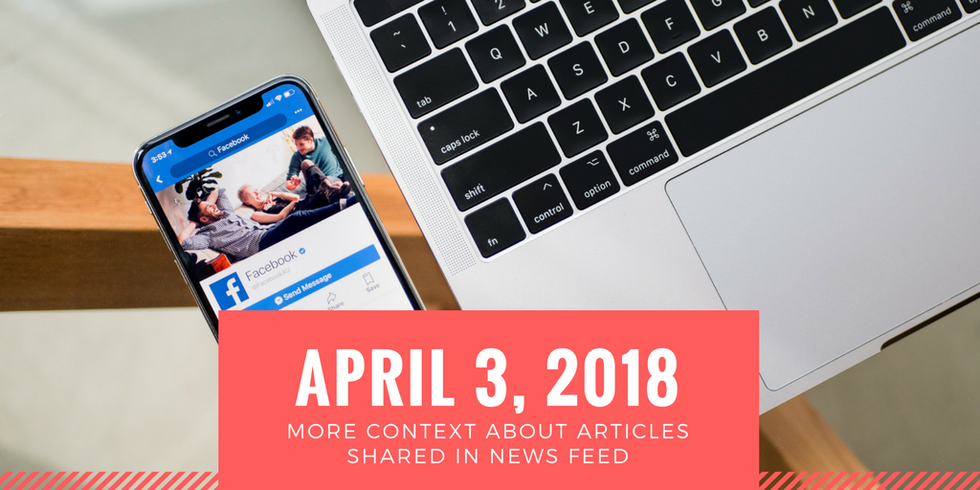
What Happened: As part of a continued effort to reduce the amount of misinformation that appears in your Facebook News Feed, the company has rolled out a new update aimed to help users evaluate the credibility of an article. What started out as a test last year is officially in action. Now users will be presented with key information to help them make better informed decisions about the validity of an article. This information includes the publisher's Wikipedia entry (if one exists), related articles, information about how many times the article has been shared, where it has been shared, and the option to follow the publisher's Page for more of their articles. They've also added two new features that weren't available in the original test: "More From This Publishers" and "Shared By Friends." Piggybacking on the update, Facebook is also testing to see whether or not people find it easier to evaluate the credibility of an article if there's more information presented about the author.
What It Means: This is Facebook's way of providing "objective context about the stories people see" in their News Feed. While this test helps foster the spread of accurate information, it's also a chance for publishers to capitalize on the changes. By creating articles that are valuable to your readers, your audience now has another way they can choose to follow your Page for more. It's an opportunity to let your content shine, creating a path toward a loyal, more robust following.
March 28, 2018: Ending Partner Categories

What Happened: In the wake of the Cambridge Analytica scandal, Facebook has decided to end its Partner Categories product. Partner Categories was a partnership between the platform and major data brokers that started in 2013. The third-party data these brokers provided helped Facebook break down its user base into meaningful segments that advertisers could strategically leverage. Facebook stated that this is a permanent change, as they became less confident in the integrity of the data that was being provided to them.
What It Means: Facebook is saying goodbye to a major data source that helped advertisers target relevant users in exchange for improving the protection of its users' privacy. The company previously collected data from three sources: their platform, advertisers, and third-party services. Eliminating data from these third parties will not affect the usage of either Facebook's or brands' user data, so advertisers can rest assured. The company is simply taking steps to clean up its data practices after falling under intense scrutiny in recent weeks.
March 5, 2018: Breaking News Label
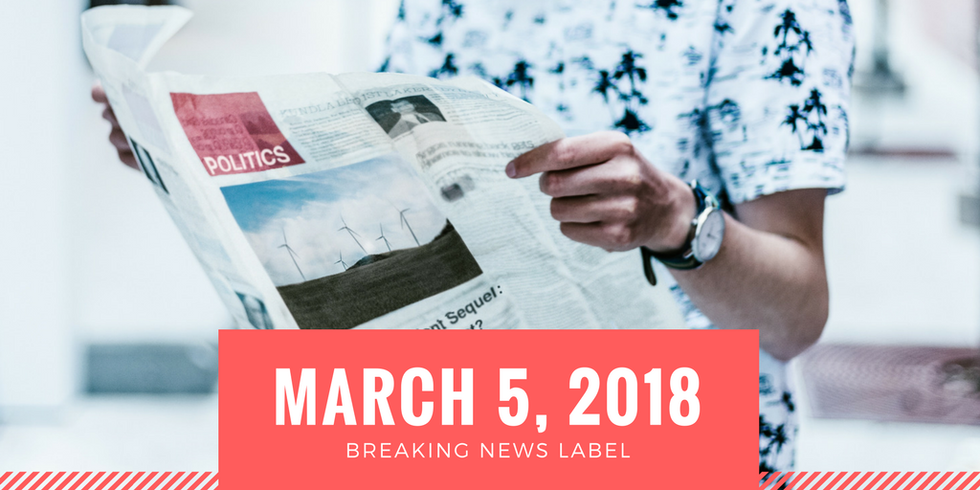
What Happened: Facebook has been testing a breaking news label with a group of publishers in the U.S. that lets them indicate what stories are breaking in real time. The platform plans to expand the test to 50 additional publishers around the world. Publishers in the larger testing group will be able to label an article as breaking news on Instant Articles, mobile links, and Facebook Live videos for up to six hours. So far, the testing has shown that users engage more with posts labeled breaking news:
- 4% lift in click-through rate
- 7% lift in likes
- 4% lift in comments
- 11% lift in shares
What It Means: This breaking news label test is a continuation of Facebook's prioritization of transparent and meaningful news content. During the test, readers are able to provide feedback to the platform on whether or not they actually consider labeled content qualified enough to be deemed "breaking." This kind of real-time interactive feedback is a way for Facebook to continue their cleanup of all the fake news and vague reporting that's haunted them since the 2016 U.S. presidential election.
February 27, 2018: Helping Local News with Digital Subscriptions
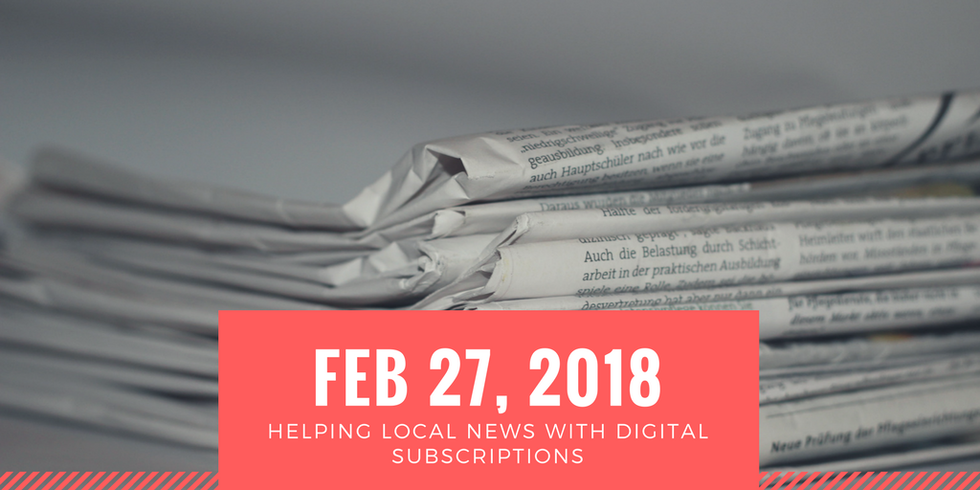
What Happened: Facebook announced a $3 million pilot program for local news organizations and papers to help grow their subscription revenue through the platform. The program, called "The Facebook Journalism Project: Local News Subscriptions Accelerator," will help 10–15 local news organizations with digital strategy to help "elevate their subscription business."
What It Means: Shortly after the platform's major "family and friends" algorithm update in January 2018, Facebook began a continued campaign to emphasize quality, trusted news. This initiative is an extension of those efforts, and Facebook is hoping to win back local news publishers who may have given up on achieving visibility on the platform. In its announcement, Facebook representatives said that they plan to announce more initiatives this year to help with "strengthening and advancing the future of journalism."
February 22, 2018: Clarifying Ad Metrics
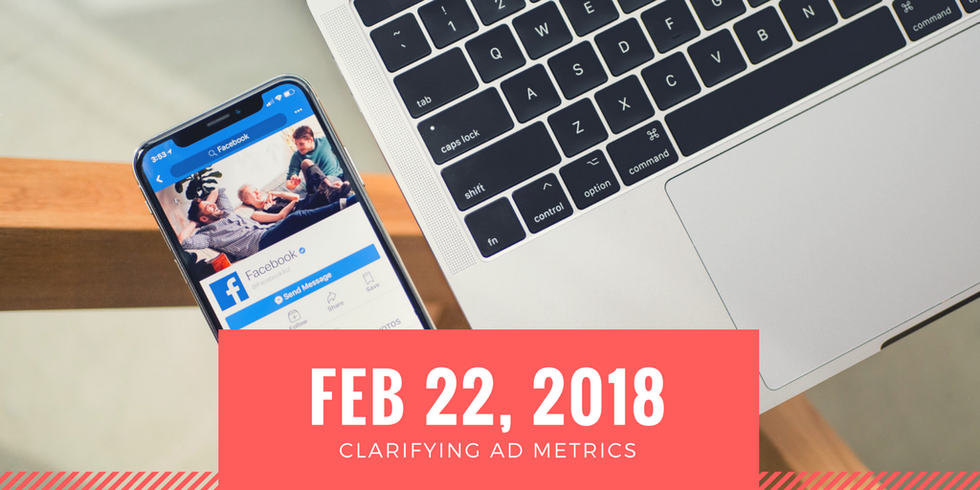
What Happened: In an effort to restore advertisers' confidence in Facebook, the company set out to do some damage control around their ad metrics. The platform announced that they would be removing 20 metrics and adding methodology labels to the rest in order to clarify and improve ad measurement transparency. The metrics removed were considered outdated, redundant, not actionable, or infrequently used. Similarly, labels on metrics will now say "estimated" and/or "in development." Estimated metrics are calculated using data modeling or sampling, while those in development are either being tested or are in the process of rolling out — so their results are subject to change.
What It Means: This is another step forward in the right direction to show that Facebook is both listening and making conscious efforts after a series of measurement problems over the last couple of years ruffled advertisers' feathers. These improvements are intended to clear up ad measurement confusion and reveal more insight into how Facebook calculates its metrics. It's a win for marketers, and it will certainly help everyone better measure their campaigns' performance.
In addition to the latest changes, Facebook will be launching a program called "Measure What Matters." It'll feature two learning tracks — one for advertisers focused on brand objectives, and another for advertisers with direct response objectives — to help marketers learn more about key metric principles. The guidance will be available on the Facebook Business website, on Facebook Live, and at in-person events starting in March 2018.
February 17, 2018: A Unified Ads Manager

What Happened: Facebook released an updated Ads Manager that combines two existing tools — Ads Manager and Power Editor — into one streamlined interface. The update started rolling out in September 2017 as a way to simplify the ads creation process and maintain one sufficient tool for everyone. The redesigned interface introduces new and updated features to help create and manage ad campaigns. New features include:
- Two Creation Workflows to Choose From: Users will automatically be opted into the workflow they chose prior to the merge to satisfy both Power Editor enthusiasts and Ads Manager moguls.
- Quick Creation Flow: This flow grants users the ability to set up their campaigns, ads, and ad sets in any order they wish. It's particularly useful for ad creation experts.
- Guided Creation Flow: For advertisers less familiar with ad campaign components, the Guided Creation wizard walks you through the entire process from start to completion.
- Import/Export and Duplication Functionality: If you manage and run a large number of ads, these features are ideal. Bulk export and/or import an Excel spreadsheet containing campaign, ad, and ad set information. Furthermore, reuse any campaign, ad, and ad set by utilizing the duplication feature.
- Automatic Drafts: This popular Power Editor feature saves changes without reflecting them until an ad is published. If you happen to leave the Ads Manager with changes left unreviewed, a reminder will now pop up to prompt you to review and publish.
- Easier Reporting: You no longer have to switch back and forth between tools to compile a conclusive report. New functionality pulls data from both Power Editor and Ads Manager to make reporting more efficient.
What It Means: A unified Ads Manager has been a long time coming. Facebook saw that nearly 85% of businesses with Pages manage them on mobile devices, so they set out to simplify the ad creation and management process. Power Editor and Ads Manager used to be drastically different tools, but various updates brought them closer together over time — to the point where there was really no need to have both anymore. The new, unified Ads Manager won't affect any existing saved data or require new skills. It will simply provide consistency and continuity. Users can still opt in to the workflow they used in the past, whether it was Power Editor or Ads Manager.
February 13, 2018: More Data for Advertisers
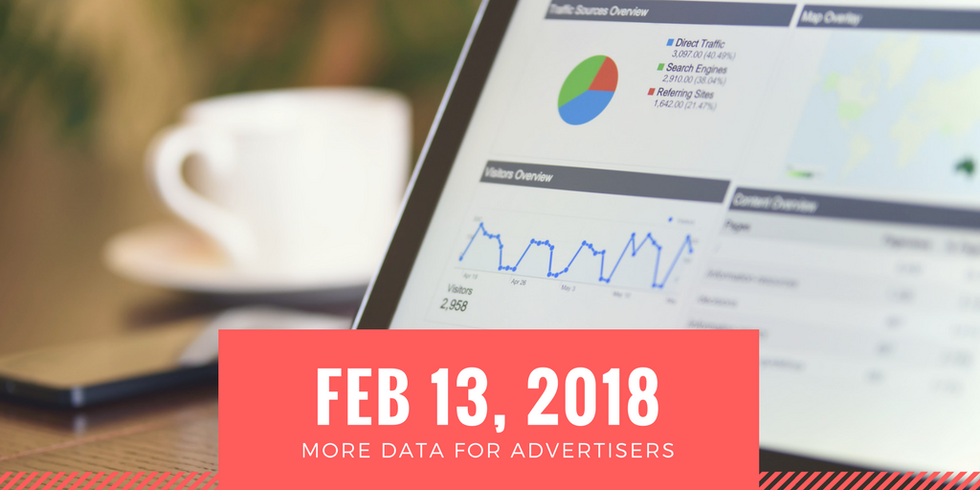
What Happened: As part of an update originally announced in September 2017, advertisers will now have more details about where their ads are being displayed across the platform. Five months after their original statement, Facebook alerted users via email that advertisers will now be able to see a list of publisher names that cover where their ads were displayed. This includes ads displayed across Facebook Audience Network, Instant Articles, and Ad Breaks. For example, a hunting gear company will now be able to see if their ads are being inappropriately displayed within Instant Articles on vegan cooking. After the pre-campaign list feature goes live, Facebook says it will soon be followed by a rollout of a post campaign list as well. The list will contain additional information about what portion of ad spend was distributed to each publisher.
What It Means: This is another important update brought on by Facebook's turbulent 2016–2017. After dealing with the fake news fallout following the 2016 U.S. presidential election, and the pushback against vile and terroristic content spreading across the platform, Facebook was forced to make serious changes to both their security and transparency with advertisers. This latest update is an extension of that effort, in conjunction with late 2017 updates like new content monetization guidelines and the hiring of 3,000 content reviewers across the platform to find and flag violent or inappropriate content. The prioritization of brand safety is long overdue for the platform, and publishers should make the most of the new data that's now being provided to them.
February 9, 2018: Page Insights Redesign
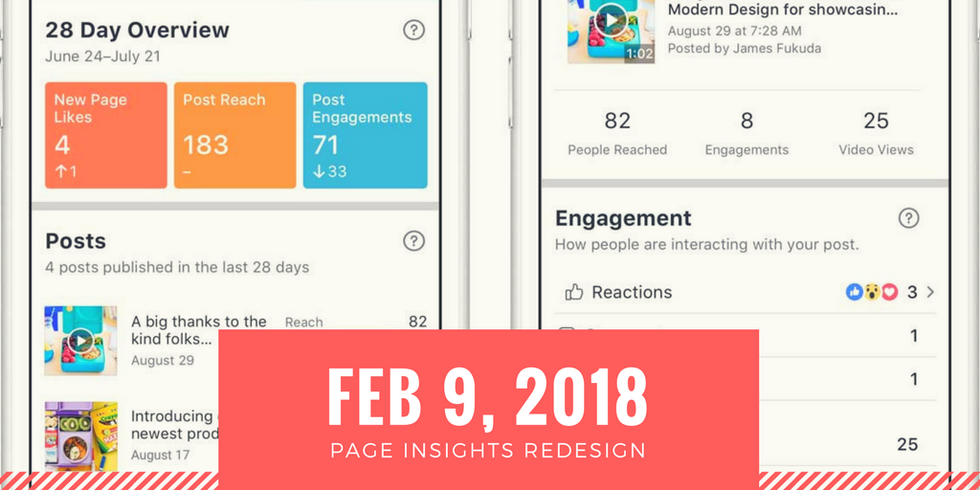
What Happened: After announcing that they would begin tracking "viewable-only impressions" back in 2016, Facebook announced in February that the platform would finally deliver on its promise. This means Facebook will only measure organic impressions for a post when it actually shows up on a user's screen. Before the change, Facebook counted organic impressions based on every time a post was served up in the News Feed. This new tracking method now matches how Facebook measures impressions for ads on its platform. For now, users will be able to see impression metrics in Page Insights for both the old and new method of measurement. Eventually, however, the old method will be retired.
What It Means: This will likely mean another sucker punch to organic reach for publishers. While much stricter, this new measurement method is a more accurate way to track true organic impressions for content. This will put more data into the pockets of publishers to help them adjust their strategies. Being able to judge what delivers authentic organic reach is important for continued audience growth, both paid and unpaid. The good news is that this update won't have an impact on engagement numbers, which is the metric to watch after the sweeping algorithm update that was announced on January 9.
February 9, 2018: Testing a Downvote Button
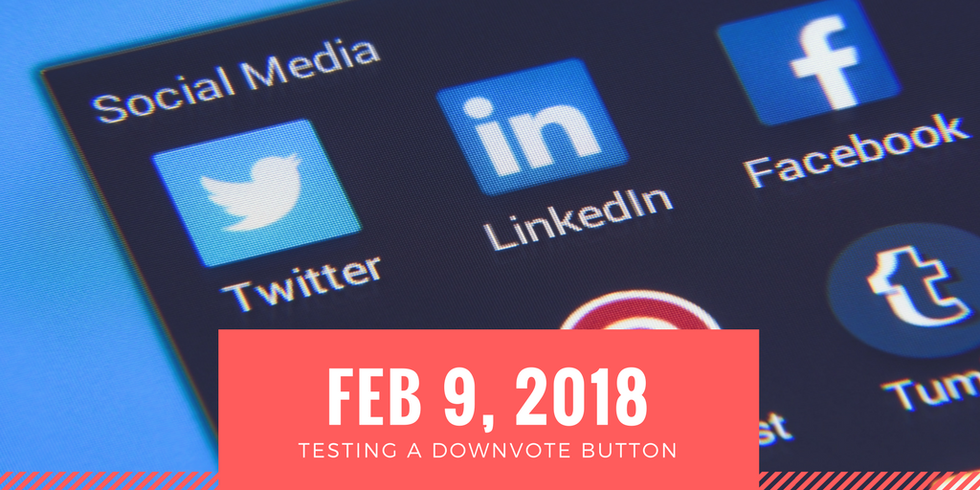
What Happened: There's been a request by users for years to have Facebook create a "dislike" button. While not a true counterpart to the "like" option, the platform began testing a downvote option in February on a very limited amount of Pages in the U.S. The platform insists that the downvote is not a dislike button, or anything like the downvote option found on Reddit. The option is an avenue for users to report abusive or inappropriate comments. Facebook will run the test for a short amount of time to see what kind of posts are bringing in the kind of "meaningful social interactions" they began pushing for in January.
What It Means: While only an experiment as of now, this could be an impactful update if it's rolled out across the platform. Before the test, the only way to react to a comment was to respond negatively in the comments, which only gave the post more engagement. Now users will be able to flag offensive content and send that data to Facebook immediately. If implemented correctly, it could make room for quality content to have a better chance in the News Feed.
January 30, 2018: Banning Ads Promoting Cryptocurrency
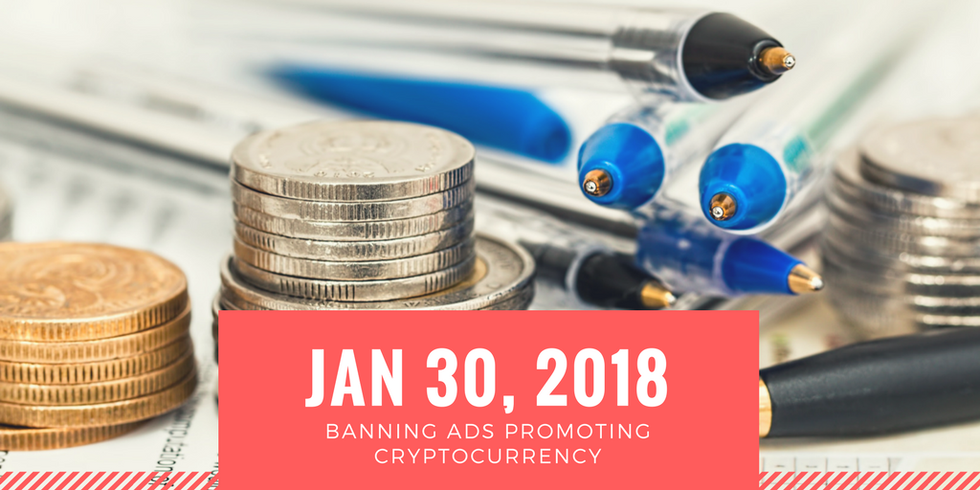
What Happened: Despite Mark Zuckerberg posting in favor of cryptocurrency options like Bitcoin at the beginning of the year, the platform made an announcement that any ads promoting cryptocurrency would be banned. After facing criticism over misleading ads during the 2016 U.S. presidential election, Facebook representatives said that this ban is part of an "ongoing effort to improve the integrity and security of our ads, and to make it harder for scammers to profit from a presence on Facebook."
What It Means: Unless you're in the cryptocurrency business, not much. For investors interested in joining the market, Facebook ads won't make much of a difference. Plus, there are many other options for cryptocurrency companies to promote themselves.
January 29, 2018: Big Changes to Branded Content

What Happened: Branded content has become popular among publishers and brands alike, with some media companies reporting a 4.4 times higher engagement rate on branded content than what's average for Facebook. The platform is now providing more detail on what qualifies as branded content both on Facebook and Instagram. The most significant change to the policy is that it will not accept paid branded content unless both partners had a role in the creation process. Specifically, the policy says, "Don't accept anything of value to post content that you did not create or were not involved in the creation of, or that does not feature you."
What It Means: This update can be a bit confusing for publishers. Facebook provided more details on what qualifies as branded content after the original policy announcement. The policy update is an extension of Facebook's continuing efforts to end links to third-party pages with overbearing ads or dishonest content using clickbait methods. Even if you're publishing quality content, it's important to label it correctly, or you could face stiff warnings and be shut out of the platform. We've gone into detail about how to protect yourself in this post.
January 29, 2018: Emphasis on Local News
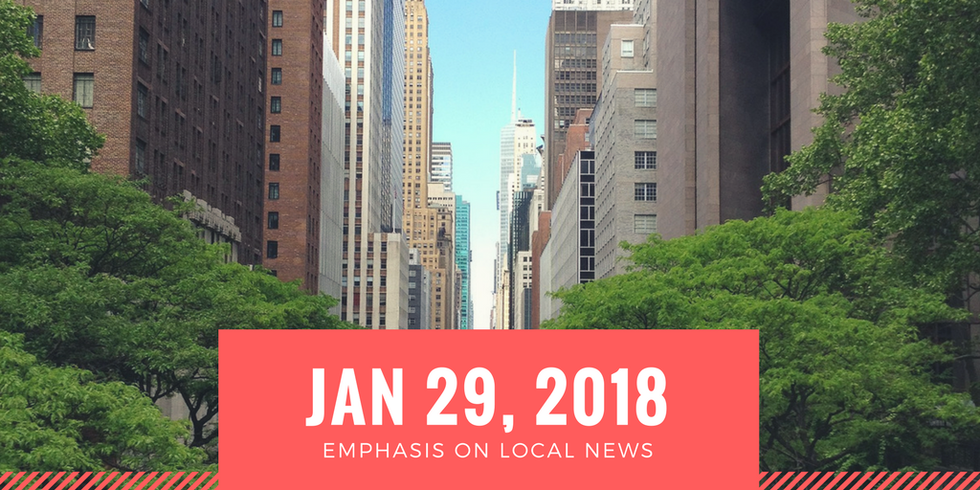
What Happened: Earlier in January, Facebook announced an algorithm update that favors quality, trusted news, and they mentioned they would be boosting local news as well. Now they're really honing in on local communities. As a way to satisfy users who want to stay abreast of what's happening in their local community, Facebook updated the News Feed to prioritize posts that are relevant to your unique surroundings.
What It Means: This is a total win for local publishers, who Facebook defines as "those whose links are clicked on by readers in a tight geographic area." There are no constraints on which publishers are eligible, so it's yet another opportunity to tailor your content to specific niches to boost your chances of visibility.
January 28, 2018: Better Control of Privacy

What Happened: In an effort to give users more control over their privacy, Facebook set out to make it easier to find and use its privacy settings. To relay the new privacy-related information to users, they introduced a series of educational videos in the News Feed that detail different aspects of privacy and data. Video topics range from how to control what information Facebook uses to show you ads, to how to delete your account entirely.
What It Means: This update is intended to help users learn how to better manage their accounts, as well as alleviate data and privacy concerns. It helps identify and understand how a user's data is used. At a later date, Facebook will also introduce a new "privacy center" to centralize privacy controls in a single place.
January 19, 2018: Focus on Quality, Trusted News
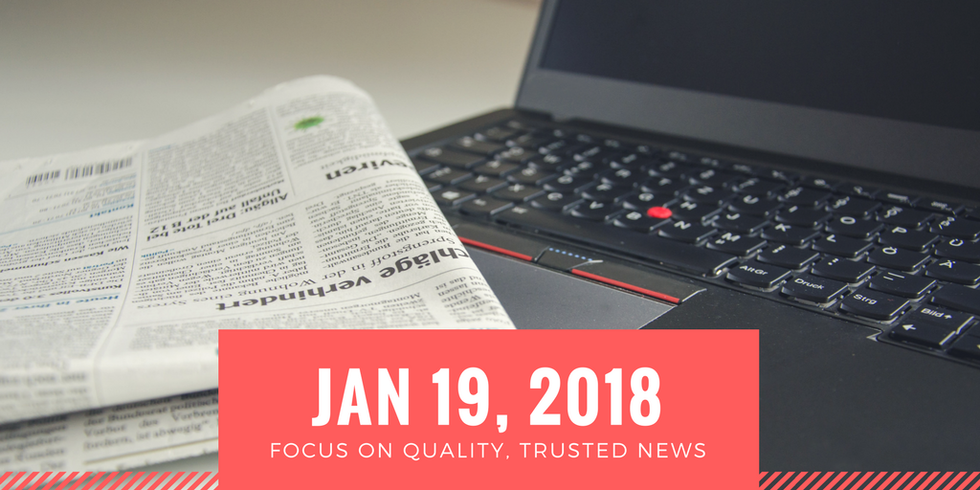
What Happened: Not more than a week after publishers began recuperating from Facebook's first major update of the year, the company released another. This update focused on the quality of news, piggybacking on all of the previous fake news initiatives we saw throughout 2017. Facebook explained that news considered trustworthy, informative, and locally relevant will rank better in the News Feed — and they're calling on Facebook members, not experts or executives, to determine the quality of news.
What It Means: Once again, this update focuses on honing your content strategy. Creating high-quality, meaningful content can help you score highly as a trusted news source, and in turn, allow you to rank higher in the News Feed. This change also gives various brands an opportunity to take advantage of local communities. By creating content that is specifically tailored to different locales, you can stand out and connect with different niche groups you've yet to tap into.
January 9, 2018: Prioritizing Meaningful Interactions
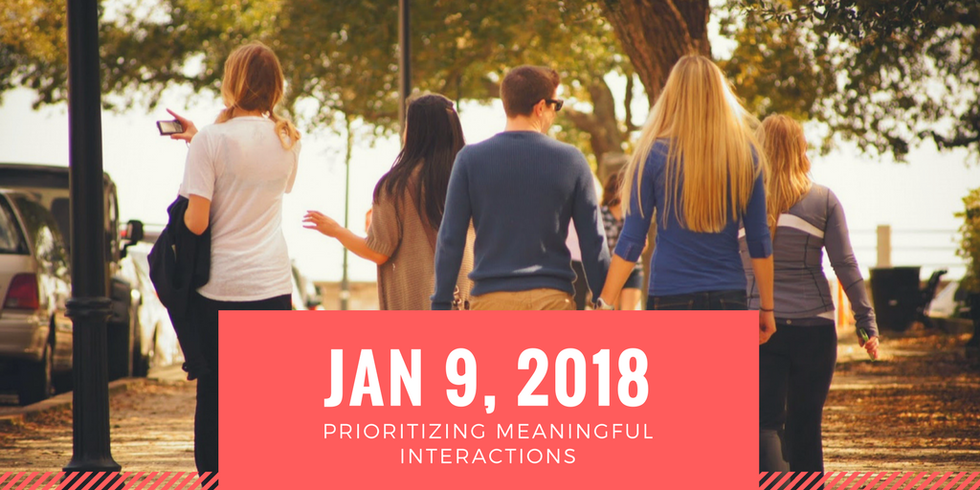
What Happened: No one can deny that 2018 started off rocky for publishers. Facebook dropped their biggest algorithm-update bomb to date, and it sent the entire media world into a frenzy. On January 11, Facebook CEO Mark Zuckerberg wrote a lengthy post that detailed the platform's new goal, and laid out the framework for changes to come. In his message, he explained that the newest update will de-prioritize news stories in favor of content from family, friends, and groups. The aim is to prevent posts from "businesses, brands, and media" from crowding out "the personal moments that lead us to connect more with each other."
What It Means: From a consumer standpoint, that all sounds great, right? But for those of us whose audiences live in the News Feed, it feels more like a doomsday scenario. At RebelMouse, we see the major update as an opportunity. It gives publishers a shot to focus on creating meaningful content that resonates with the right audience. It's a chance to create real organic loyalty that can survive any future algorithm update or platform change. Think of this algorithm shift as a retreat back to the Facebook that once was. The social giant intends to take us back to a more intimate place, and there's still room there for publishers and social ROI, too.
- The Facebook Algorithm Change 2018: What it Means for Brands ›
- Mark Zuckerberg - One of our big focus areas for 2018 is... | Facebook ›
- Facebook overhauls News Feed in favor of 'meaningful social ... ›
- The New Facebook Algorithm 2018: Everything Marketers Need to ... ›
- Facebook Is Changing. What Does That Mean for Your News Feed ... ›
- How Facebook's Latest Changes Impact Influencers And The Future ... ›
- Master the Facebook Algorithm in 2018 ›
- Increasing Facebook Engagement in 2018: Insights from the Experts ›
- How to Make Facebook's 2018 Algorithm Change Work for your ... ›

















































































